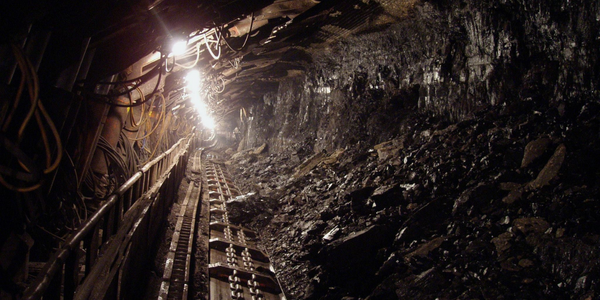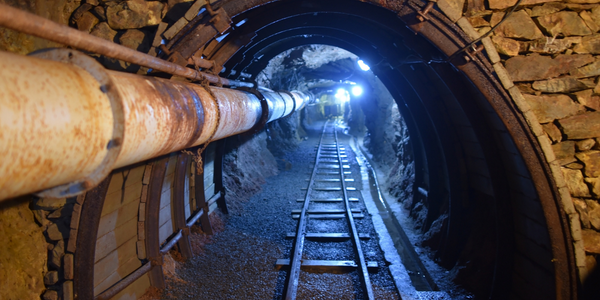Technology Category
- Cybersecurity & Privacy - Network Security
- Sensors - Temperature Sensors
Applicable Industries
- Mining
- National Security & Defense
Use Cases
- Inventory Management
- Tamper Detection
Services
- System Integration
About The Customer
Yankuang Group is a large conglomerate based in Zhucheng, PRC (China). The company owns 50 subsidiaries and has operations in China and Australia. It employs 100,000 people and has annual sales of RMB 11.258 billion (USD 3.34 billion). The company operates in the energy and mining industry, with a focus on mining, coal, chemicals, and construction. It manages a complex and expanding IT environment, with as many as 50 subsidiaries, 80 branch networks, and 20,000 computer users.
The Challenge
Yankuang Group, a large conglomerate based in Zhucheng, China, faced a significant challenge in managing IT and security for its 50 subsidiary companies. The company needed to improve secure access for its branch offices and tele-workers, which included as many as 80 branch networks and 20,000 computer users. The complexity of the IT environment was further amplified by the high number of different applications running on multiple systems, such as ERP, medical insurance, office automation, email, corporate website, and production automation. Traditional antivirus software and servers access control lists were inadequate to protect its infrastructure. The company also needed a manageable and flexible system that could scale up as its IT infrastructure expands.
The Solution
Check Point provided a comprehensive security solution to Yankuang Group. The solution included an integrated VPN Software Blade for unsurpassed scalability, high performance, and reliability, SSL VPN for Remote Access, and IP Appliances for turnkey security. The company employed 50 Check Point IP Appliances in dual clusters at chokepoints throughout the network. Dedicated lines connected the data center to key nodes, while secondary nodes and mobile users connected over multiple-access VPNs. Check Point also ensured that teleworkers could access the applications they needed even in places where Internet connectivity was unstable. Remote access for laptops and PDAs was secured by SSL VPN. The solution allowed security to be monitored in real time and administered from one location, providing higher security at reduced cost.
Operational Impact
Quantitative Benefit

Case Study missing?
Start adding your own!
Register with your work email and create a new case study profile for your business.
Related Case Studies.

Case Study
Underground Mining Safety
The goal was to produce a safety system to monitor and support underground mining operations; existing systems were either too simple (i.e. phone line) or overly complex and expensive, inhibiting deployment, and providing little-to-no support in event of an accident. Given the dangerous nature of the mining work environment and the strict regulations placed on the industry, the solution would have to comply with Mine Safety and Health Administration (MSHA) regulations. Yet the product needed to allow for simple deployment to truly be a groundbreaking solution - increasing miner safety and changing daily operations for the better.

Case Study
Mining Firm Quadruples Production, with Internet of Everything
Dundee Precious Metal’s flagship mine, in Chelopech, Bulgaria, produces a gold, copper, and silver concentrate set a goal to increase production by 30%. Dundee wanted to increase production quality and output without increasing headcount and resources, improve miner safety, and minimize cost.

Case Study
Fastenal Builds the Future of Manufacturing with MachineMetrics
Fastenal's objective was to better understand their machine downtime, utilization, quality issues, and to embrace cutting-edge manufacturing technology/process improvement capabilities to bring their team to the next level. However, there was a lack of real-time data, visualization, and actionable insights made this transition impossible.

Case Study
Joy Mining Systems
Joy equipment faces many challenges. The first is machine integration and control. The business end of the machine has a rapidly-spinning cylinder with 6-inch diamond-studded cutting teeth. It chews through rock at rates measured in tens of tons per minute. The system grinds through the rock in front, creating a rectangular mine tunnel. Hydraulic lifters support the ceiling as the machine moves forward. Automated drills and screws drive 3-ft long screws into the ceiling to stabilize it. The rock and coal fall into a set of gathering "fingers" below the cutting cylinder. These fingers scoop up the rock and coal and deposit it onto a conveyor belt. The conveyor passes under the machine and out the back. A train of conveyor belt cars, up to a mile long, follows the cutter into the mine. The rock shoots along this train at over 400 feet per minute until it empties into rail cars at the end. Current systems place an operator cage next to the cutter. Choking dust (potentially explosive), the risk of collapse and the proximity of metal and rock mayhem make the operator cage a hazardous location.

Case Study
Data Capture for Afghanistan Forces
Electronic equipments on the field of Afghanistan provided information on the status of the vehicle and to identify potential threats surrounding it to the British Force. The monitoring and interpretation of this data requires robust and sophisticated digitization for data capture and communication.








